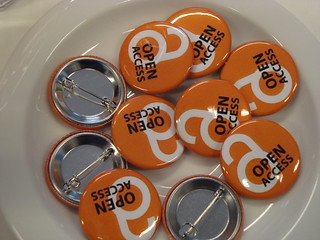Educating K12 Teachers With MOOCs and Open Education
Coursera, probably the biggest player in massive open online courses now, announced a partnership with 12 top professional development programs and schools of education to open up training and development courses (28 to start) to teachers worldwide. The company says it wants to "create a hub of teacher professional development courses aimed at providing teachers, parents, and anyone else who teaches with the tools and skills to help build stronger education systems.”
 There is also a new project called MOOC-Ed (for "massive open online courses for educators) from the Alliance for Excellent Education which is an advocacy organization involved in encouraging digital education in partnership with North Carolina State University’s Friday Institute for Educational Innovation, at the College of Education.
There is also a new project called MOOC-Ed (for "massive open online courses for educators) from the Alliance for Excellent Education which is an advocacy organization involved in encouraging digital education in partnership with North Carolina State University’s Friday Institute for Educational Innovation, at the College of Education.The first free online class they offered aims at providing thousands of regional administrators in the U.S. help using technology effectively to meet the needs of their school. The seven-week course was set for April 8 to May 24 and was designed for principals, curriculum directors, superintendents, finance officials, tech directors, and others that plan technology use for K-12th grade.
It is always difficult to pick a "good time" of the year, week, or day to get educators to commit to a few hours of professional development. Asynchronous, online courses may be the best solution to scheduling. For the MOOC-Ed course, it was recommended that you needed to commit 2-4 hours per week for the course.
MOOCs for students in the K-12 environment might have more issues than in higher education. (Although all the MOOC reports I have seen on demographics, including my own course, report high school age students participating.) But using open courses to assist in teacher professional development and increase their their knowledge of technology might work very well.
In the "Academia and the MOOC" course I just completed, even though the participants were mostly from higher education, threads of discussion emerged on using MOOCs in K12 education, corporate training, professional development and, of course, lifelong learners who just want to learn new things without any concern for credit.
 Coursera has partnered with the College of Education, University of Washington; Curry School of Education, University of Virginia; Johns Hopkins University School of Education; Match Education’s Sposato Graduate School of Education; Peabody College of education and human development, Vanderbilt University; Relay Graduate School of Education; and University of California, Irvine Extension. They also are partnering with institutions and museums, including the American Museum of Natural History, The Commonwealth Education Trust, Exploratorium, The Museum of Modern Art, and New Teacher Center. This is the first time Coursera is partnering with non-degree-bearing institutions and their first attempt to work with early childhood and K-12-level education.
Coursera has partnered with the College of Education, University of Washington; Curry School of Education, University of Virginia; Johns Hopkins University School of Education; Match Education’s Sposato Graduate School of Education; Peabody College of education and human development, Vanderbilt University; Relay Graduate School of Education; and University of California, Irvine Extension. They also are partnering with institutions and museums, including the American Museum of Natural History, The Commonwealth Education Trust, Exploratorium, The Museum of Modern Art, and New Teacher Center. This is the first time Coursera is partnering with non-degree-bearing institutions and their first attempt to work with early childhood and K-12-level education. As with the university courses Coursera offers, these education courses will have video lectures, peer forums, supplemental
materials and interactive components.
In their newly-added category “Teacher Professional Development,” you will find:
“Common Core in Action: Literacy Across Content Areas,” from the New Teacher Center
“Teaching Character and Creating Positive Classroom,” from Relay Graduate School of Education taught by Dave Levin, the co-founder of KIPP
“The Brain-Targeted Teaching Model for 21st Century Schools” taught by Mariale Hardiman of John Hopkins School of Education
“Effective Classroom Interactions: Supporting Young Children’s Development,” from UVA, taught by Bridget Hamre, Grace Funk, Allison Leach and Kathy Neesen
“Tinkering Fundamentals: Integrating Making Activities into Your STEM Classroom,” from the Exploratorium
“Student Thinking at the Core,” taught by Barbara Stengel and Marcy Singer-Gabella of Vanderbilt University
“Coaching Teachers: Promoting Changes that Stick,” taught by Orin Gutlerner of Match Education
Three science content focused courses for Educators taught by the American Museum of Natural History
Eight part series on the Foundations of Teaching for Learning aimed at teachers in the developing world taught by Commonwealth Education Trust

